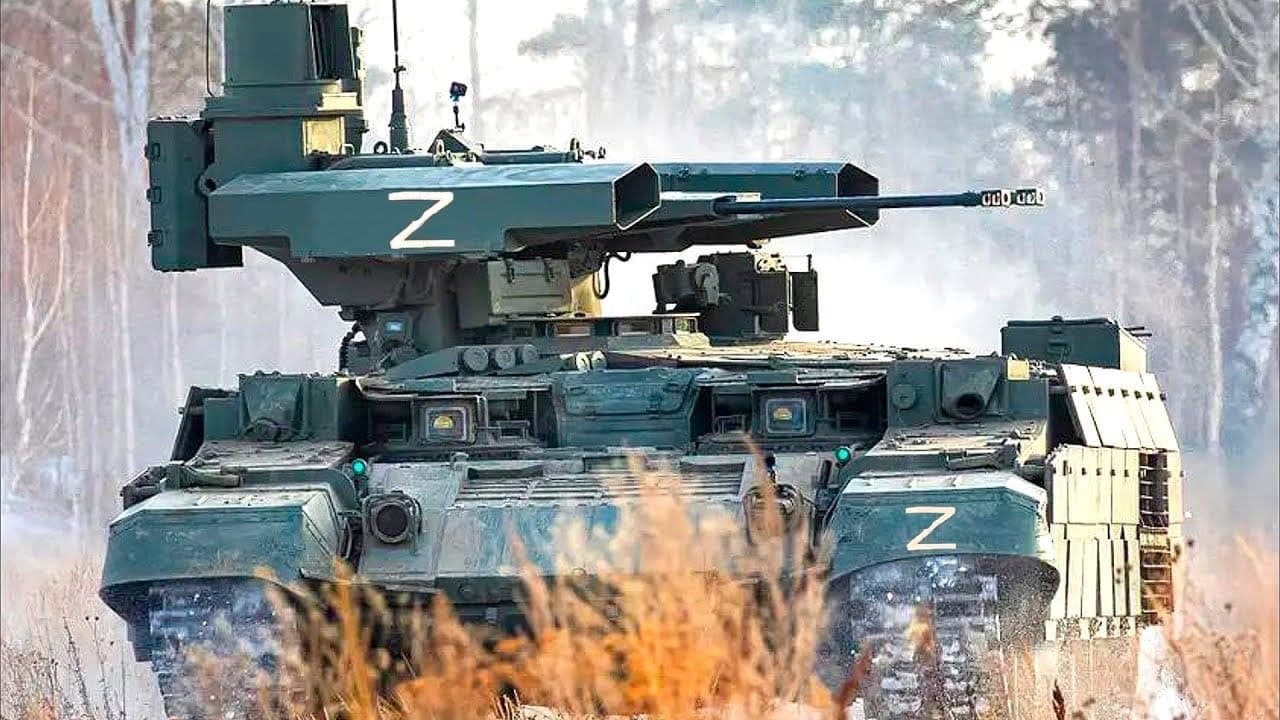The Kremlin’s war effort in Ukraine is looking more desperate by the day.
Russia is losing its ability to shape the battlefield. Ukrainian forces are moving south toward the critical Kherson region and streaming into the east. There could be another significant breakthrough this week.
Russian President Vladimir Putin is fast running out of options. His call-up of 300,000 reservists will not make a difference on the battlefield any time soon. It will take several months before they are combat-effective. In the meantime, Russia is still depending on small battalion tactical groups without larger brigades and divisions. As the Russian military tries to redeploy and plug holes in the lines, the Ukrainians probe forward to find weak points in sectors the Russian invaders cannot cover.
What are Putin’s military choices?
Leaving the nuclear option aside, as 19FortyFive has covered this extensively, let’s take a look at what Russia can do conventionally.
The Russians could continue to attack civilian targets such as power plants and water treatment facilities, but they are running out of precision-guided munitions. Putin’s generals can bring more tanks and armored personnel carriers out of storage and send them to the front to try their own counteroffensive, but the priority now is to reposition troops to stop the bleeding. Russia must consolidate the territory it controls and hope that with winter coming, the fight slows into stalemate mode again.
There is a small chance that Putin would withdraw his forces even further, freeze the war, and declare victory, even though the world knows that Ukraine has all the momentum on its side. This could be described as the capitulation option. This choice is not likely right now, because Putin is in denial about the fact that Russia is losing, and he still does not think he has made any mistakes.
Putin could fire more generals until he finds one someone able to prosecute the war more effectively. This would mean sacking chief of the general staff Valery Gerasimov — his best general. Then, Putin could declare a full-scale war that would engage the nation’s total strength against Ukraine. This would be difficult, as the general public is not likely to support such a drastic move. Plus, Russian forces suffer from poor morale, and many are ready to give up after suffering staggering losses.
A Series of Bets
Putin could also bring China, North Korea, and Iran into a coalition that would send more war materiel to Ukraine and boost Russia’s military hardware. I call this the coalition of the rogues. Russia has already procured combat drones from Iran, and Moscow is buying rockets and artillery shells from North Korea.
Russia could continue to fight on. Moscow knows that Ukraine doesn’t have the troops to hold the ground that Volodymyr Zelenskyy’s forces are winning back. This will likely be Kyiv’s biggest problem. The closer they get to the Russian border, the less their numbers suffice to hold terrain. Putin could count on the advances to eventually stop, and Russia could fall back and focus on protecting Crimea at all costs. The front lines would shrink, but Russia would mount a more effective defense of ground it can more easily control.
The best of Putin’s poor options is to aim for a stalemate this winter, fire generals, and find a winning combination of new leadership. This would buy time for new conscripts to be trained in the coming months, after which Russia could throw the new forces into the fight and hope for the best.
Putin is probably not going to give up and sue for peace. But he can’t escalate the war conventionally without stopping Ukraine’s current advance. And he cannot stop Western countries from supplying Ukraine with new weapons and ammunition unless he is willing to attack countries such as Poland where some Western arms are being transited. This type of action would not stem the flow of allied military aid, and it would constitute an attack on NATO — something Putin has stayed away from. Look for Russia to buy time until the winter and hope that a military surge from reserve call-ups can restore Russia’s will to fight.
Expert Biography: Serving as 1945’s Defense and National Security Editor, Dr. Brent M. Eastwood is the author of Humans, Machines, and Data: Future Trends in Warfare. He is an Emerging Threats expert and former U.S. Army Infantry officer. You can follow him on Twitter @BMEastwood. He holds a Ph.D. in Political Science and Foreign Policy/ International Relations.

